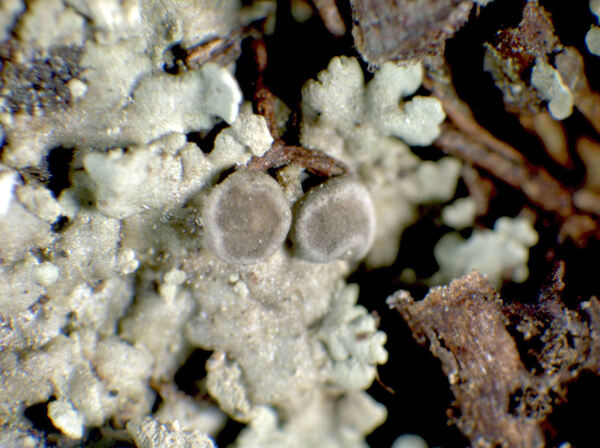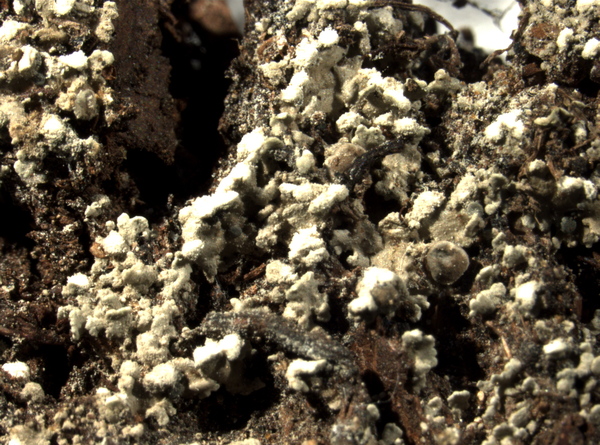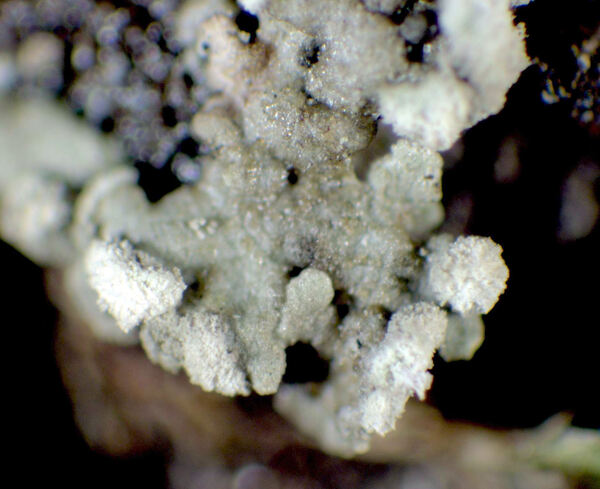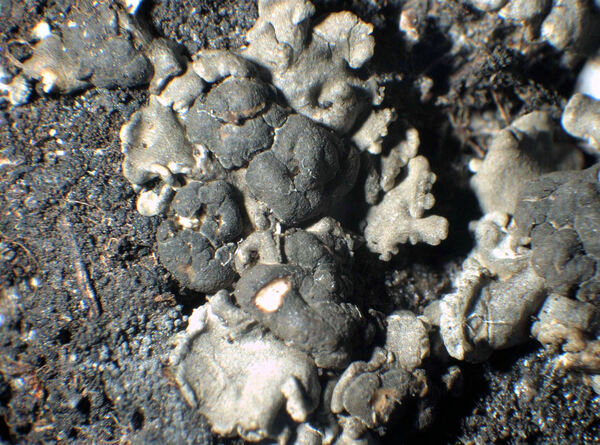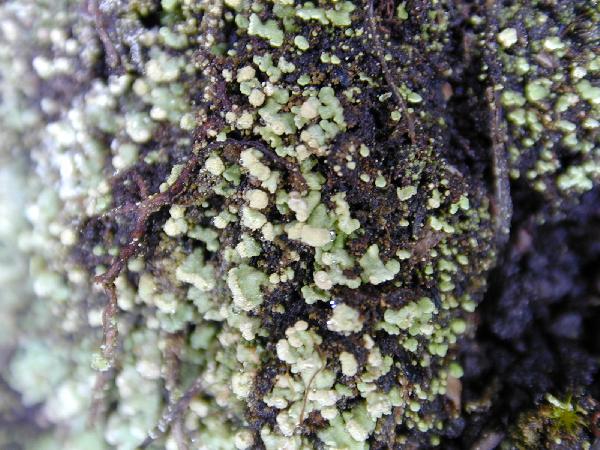Trapeliopsis glaucolepidea (Nyl.) Gotth.Schneid.
Bibl. Lichenol., 13: 148, 1980 (1979). Basionym: Lecidea glaucolepidea Nyl. - in Carroll, Nat. Hist. rev. Quart. J. Sci., 6: 526, 1859.
Synonyms: Lecidea percrenata Nyl.; Trapelia percrenata (Nyl.) V. Wirth; Trapeliopsis glaucolepida (Nyl.) Gotth.Schneid.; Trapeliopsis percrenata (Nyl.) Gotth. Schneid.
Distribution:
Description: Thallus squamulose, consisting of pale grey green to olive-green, 0.3-1(-2.5) mm wide squamules with ascending, lobulate, sorediate margins, the soralia labriform to subcapitate, pale grey to grey-green (creamy white in shade-forms), sometimes confluent and covering the whole surface. Apothecia rare, lecideine, 1-1.5(-2) mm across, with a brown to dark grey-green, at first flat, then convex disc and a usually paler, finally often excluded proper margin. Epithecium pale yellowish brown; hymenium colourless; paraphyses coherent, slender, branched and anastomosing, only slightly thickened at apex; hypothecium pale yellowish brown. Asci 8-spored, cylindrical-clavate, thin-walled, the apical dome K/I- or K/I+ pale blue, Trapelia-type. Ascospores 1-celled, hyaline, ellipsoid, 8-11 x 3.5-5.5 μm. Photobiont chlorococcoid. Spot tests: thallus and soredia K-, C-, KC-, P-, UV+ glaucous. Chemistry: an unidentified lichen compound.Note: a species whose thallus resembles the primary squamules of Cladonia, mostly sterile, found on plant debris and rotting wood. Widespread worldwide, in Central Europe it mostly occurs in montane forests; known from several localities in the Alps, mainly in Austria, elsewhere probably overlooked or confused with other species, being mostly sterile. To be looked for in the Italian Alps.
Growth form: Crustose
Substrata: soil, terricolous mosses, and plant debris
Photobiont: green algae other than Trentepohlia
Reproductive strategy: mainly asexual, by soredia, or soredia-like structures (e.g. blastidia)
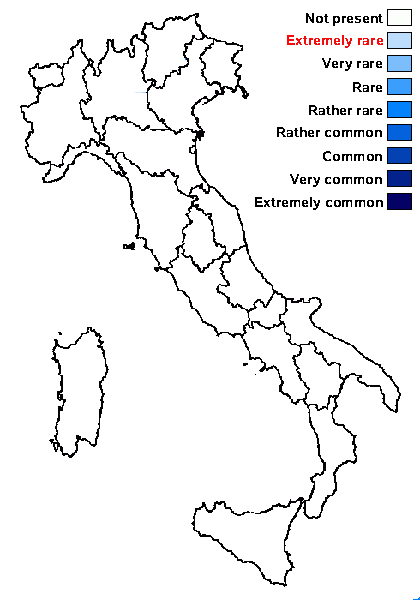
Predictive model
Growth form: Crustose
Substrata: soil, terricolous mosses, and plant debris
Photobiont: green algae other than Trentepohlia
Reproductive strategy: mainly asexual, by soredia, or soredia-like structures (e.g. blastidia)

Predictive model
 INDEX FUNGORUM
INDEX FUNGORUM
 GBIF
GBIF
